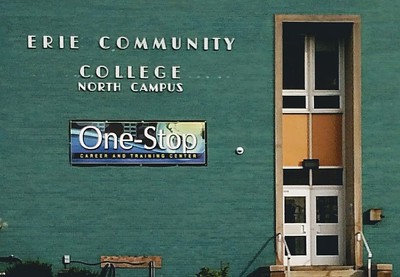Private colleges and universities rarely use the “B-word,” (bankruptcy), so when a public institution uses it, it catches people’s attention. Erie Community College (ECC), which I have written about before, is trying to close a $9M hole in its budget. Its enrollment has declined by more than 23% during the pandemic. ECC is part of the SUNY system of higher education.
Falling enrollments have caught many community colleges off guard. After a 10-year “drought” cause by relatively good, stable economic growth, the pandemic created everything needed for a good enrollment cycle. High unemployment, increased cost of living and a high number of college-eligible students had all the makings of a good soup. But these conditions didn’t direct a raft of people into community college classrooms. In fact, the pandemic landed on campuses with a resounding thud.
Instead, schools like ECC found themselves looking for work. One potential solution to ECC’s financial crunch was selling its South Campus to the Buffalo Bills as the site of its new facility. Another is offering early retirement incentives to ECC’s nearly 150 retirement-eligible workers.
Erie County has pledged $2.5M toward the effort, which county officials estimate could save ECC more than $6M in extended costs. ECC has also cut 7 programs with low enrollment or that duplicated programs at one of ECC’s other two campuses.
Raise enrollment; contain operational costs
These efforts are not unique. Nearly one in five higher education institutions is currently offering its full time personnel cash incentives to retire. The situation is so dire at ECC that Erie County Executive Mark Poloncarz said in his State of the County address that barring sufficient interest in the plan from the faculty and staff, ECC may have to file for bankruptcy protection.
First, I don’t know that a state entity – like a community college – can declare bankruptcy. (At least not without a lot of help from the state.)
Second, the financial condition of the college is a lot to lay on the faculty and staff. ECC admits that there’s a lot of duplication in its operations of the three campuses. By centralizing some administrative functions, ECC could reduce its administrative costs. Similarly, ECC could consolidate some academic programs.
Last year, a consulting firm recommended that ECC decommission two buildings on its South Campus, to eliminate their exorbitant operating costs. Shuttering those two buildings, the consultants estimated, would save as much as $10M. (Deficit solved.)
Ultimately, ECC’s financial condition is the exclusive purview of its administration and Trustees. They are responsible for operating the college and providing financial oversight. ECC’s current financial condition is the direct result of poor administration. Crafting faculty-and-staff-based solutions to address the product of administrative failures without addressing the failure itself is merely a setup for future failures.
When a community college has financial problems, the responsibility lies with the administrators, not the faculty and staff. It is the Trustees’ job to hold them accountable for bad decisions and carelessness.
Photo Credit: Alexis Clifton, via Flickr












